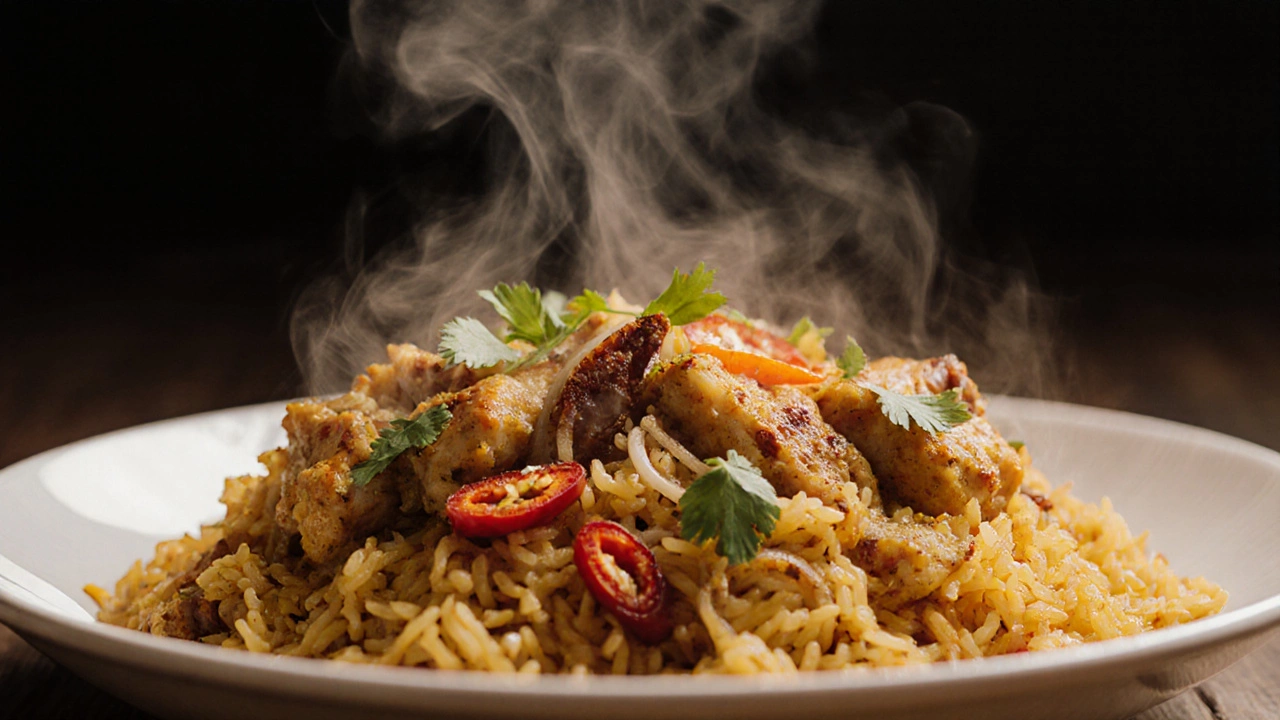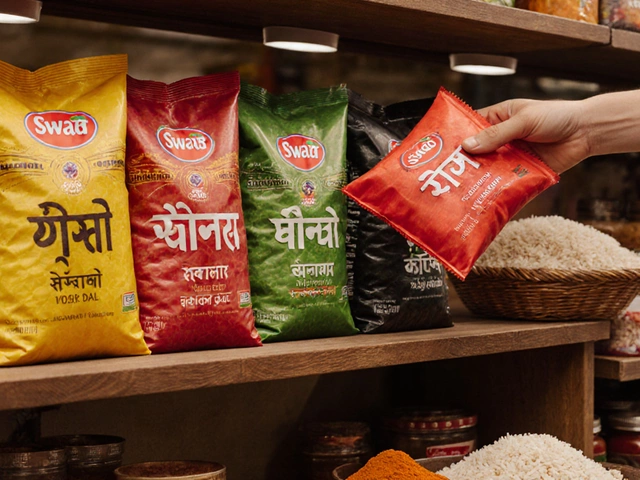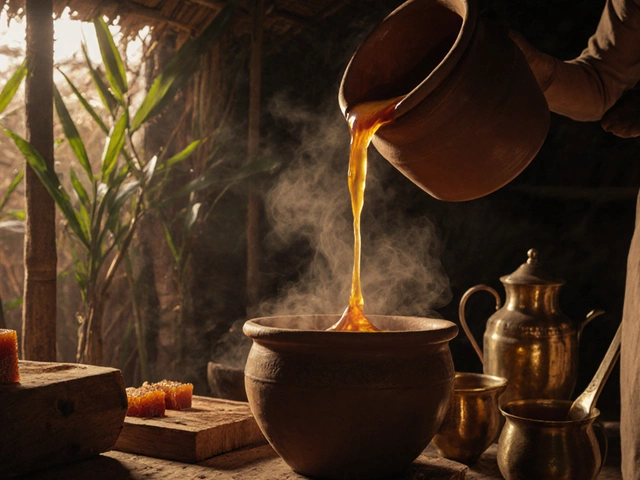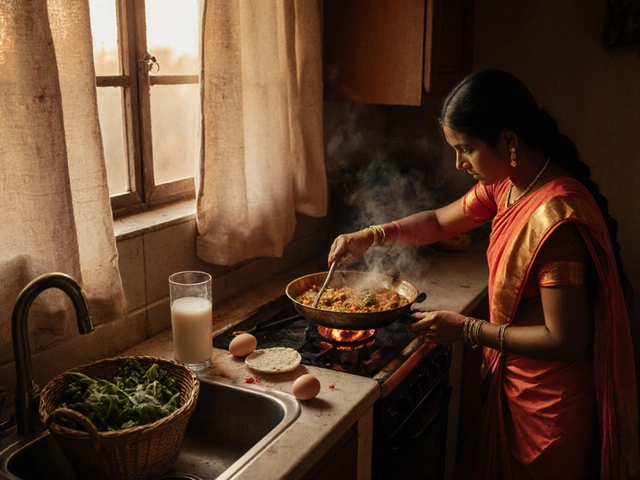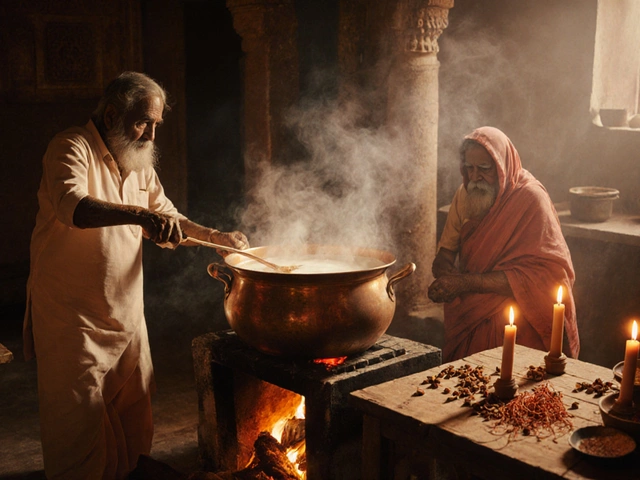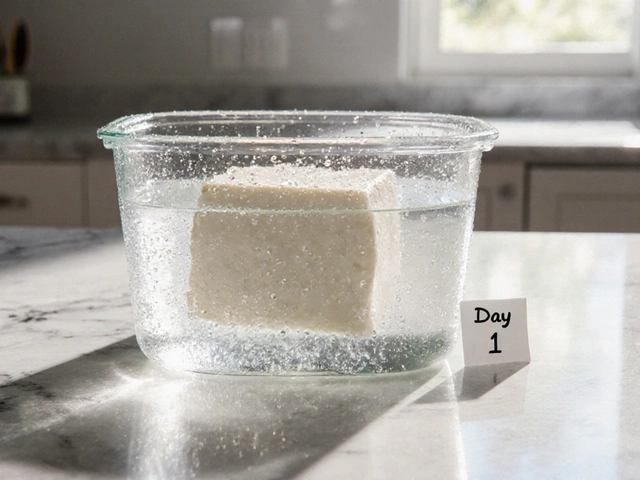Biryani Heat Level Calculator
Medium
Based on current settingsTry reducing red chili powder by 30% and increasing aromatic spices like cardamom or cinnamon to balance the heat.
Red Chili Powder
Ground dried chilies (~30,000–50,000 SHU)
Green Chilies
Fresh chilies (~15,000–30,000 SHU)
Quick Takeaways
- Biryani’s heat comes from a blend of whole and ground spices, not just chili.
- Traditional spice mixes like garam masala, red chili powder, and black pepper are layered at different cooking stages.
- Cooking techniques - especially frying spices in ghee or oil - release capsaicin and other flavor‑boosters.
- Regional styles (Hyderabadi, Kolkata, Malabar) vary in chili type and quantity.
- You can dial down the heat with yogurt, coconut milk, or by adjusting the spice ratios.
When you bite into a steaming plate of Biryani is a layered rice dish that combines fragrant basmati, marinated meat or vegetables, and a complex spice blend, the first thing that hits you is often the fiery kick. But why does biryani feel so much hotter than, say, a plain curry? The answer lies in a mix of ingredients, chemistry, and technique.
1. The Spice Chemistry That Powers the Heat
Spice heat isn’t just about the number of chilies you add. It’s about how the active compounds - mainly capsaicin in chilies and piperine in black pepper - interact with fats and proteins during cooking. Capsaicin is fat‑soluble, which means when you fry chilies in hot oil or ghee, the compound dissolves and spreads evenly through the dish, creating a uniform burn.
Two other compounds play a supporting role:
- Chili pepper (provides capsaicin, the main driver of heat)
- Black pepper (contains piperine, which amplifies the perception of spiciness)
2. Core Spice Ingredients in a Traditional Biryani
Most classic biryanis rely on a core set of spices that together create a layered heat profile. Below is a quick rundown of each, why it matters, and the typical amount used for a 4‑serving pot.
| Spice | Form | Scoville Rating (approx.) | Typical Amount |
|---|---|---|---|
| Red chili powder (ground dried chilies) | Powder | 30,000‑50,000 SHU | 1‑2 tsp |
| Green chilies (fresh chilies, often slit) | Whole | 15,000‑30,000 SHU | 2‑3, sliced |
| Black pepper (whole or freshly ground) | Whole / Ground | 0 (pungent, not hot) | ½ tsp |
| Garam masala (a warm blend of cinnamon, cloves, cardamom, nutmeg, etc.) | Powder | 0 (aromatic) | 1 tsp (added at the end) |
Notice how only the red chili powder and green chilies contribute measurable heat (measured in Scoville Heat Units). The other spices, while not “hot” on their own, intensify the overall sensation by adding pungency and aromatics that trigger the palate.
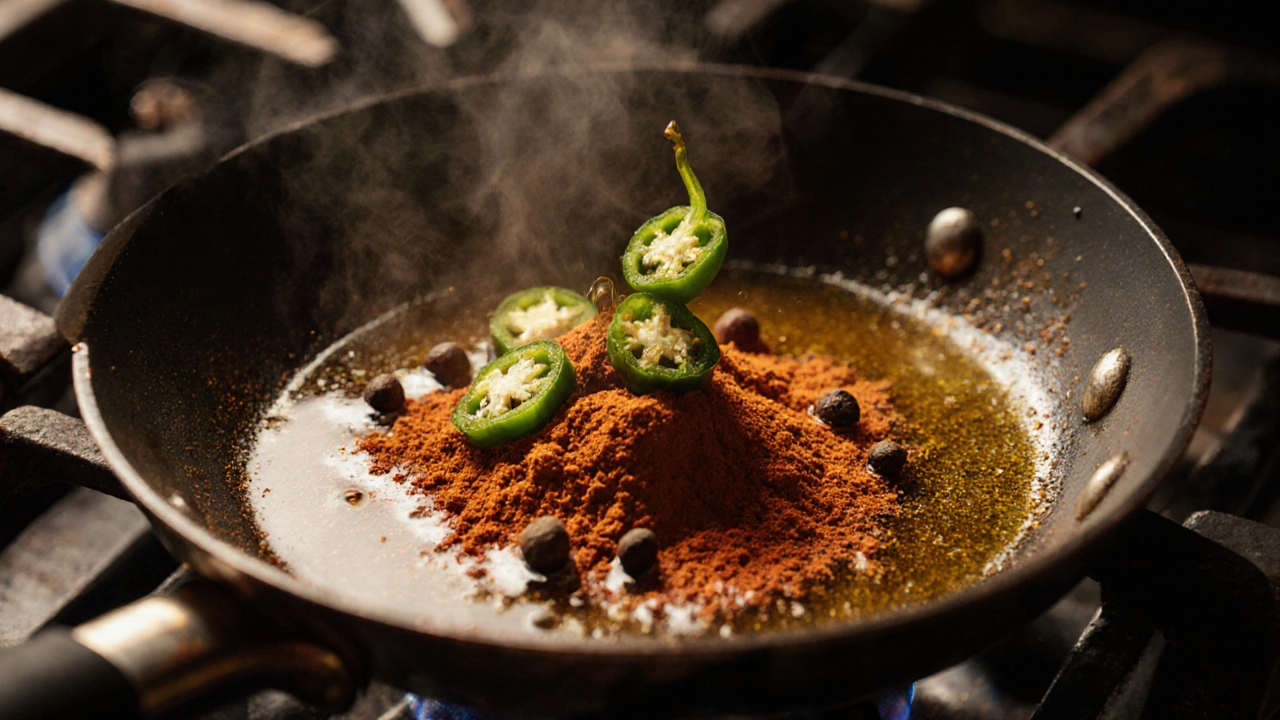
3. How Cooking Technique Amplifies Spiciness
Even if you use modest amounts of chili, the way you treat the spices can make a big difference.
- Tempering (tadka): Whole spices (cumin seeds, bay leaves, cardamom) are fried in hot ghee or oil. This step releases essential oils and caps capsacin from ground chilies, achieving a deeper, more even heat.
- Layering: Spices are added at multiple stages - first in the tempering, then mixed into the marinated meat, and finally sprinkled over the rice before the final “dum” (steam) cooking. Each layer builds flavor and heat.
- Steam cooking (dum): The sealed pot traps volatile compounds, preventing them from escaping. The result is that the heat stays locked in, making each bite consistently spicy.
Two fats commonly used are ghee (clarified butter, rich in saturated fat, excellent for flavor absorption) and oil (often sunflower or mustard oil, both high in polyunsaturated fat). Because capsacin loves fat, the richer the medium, the more “burn” you’ll perceive.
4. Regional Variations and Their Spice Signatures
India’s culinary map is a patchwork of regional biryanis, each with its own heat philosophy.
- Hyderabadi: Uses a generous amount of Kashmiri red chili powder, which is vibrant in color but milder in heat, balanced by fresh green chilies.
- Kolkata: Adds a splash of potato‑based khichdi and often incorporates a hotter “lahsun‑mirch” paste, making it noticeably spicier.
- Malabar (Kerala): Relies on roasted coconut and a modest amount of dried red chilies, but the heat is amplified by the use of black pepper and often a handful of fresh curry leaves.
- Bangladeshi: Known for a fierce kick, typically using both dried and fresh chilis, plus a pinch of dried fenugreek (methi) that adds a subtle bitterness that makes the heat linger.
Understanding the regional spice blend helps you adjust the heat to suit your taste. If you love a milder profile, start with a Hyderabadi recipe and cut the green chilies in half.
5. Managing Heat Without Sacrificing Flavor
Want a biryani that’s flavorful but not flaming? Here are proven tricks:
- Yogurt or Coconut Milk: Adding 2‑3 tbsp of plain yogurt or coconut milk to the meat marination dilutes capsacin while adding a tangy or creamy note.
- Acid Balance: A splash of lemon juice or tamarind can tone down perceived heat by stimulating different taste receptors.
- Reduce Chili Quantity: Cut the red chili powder by 30‑50% and increase aromatic spices like cardamom or cinnamon to keep depth.
- Seed and Vein Removal: For fresh green chilies, discard the seeds and white ribs; they hold most of the capsaicin.
- Serve with Cooling Sides: Raita (yogurt with cucumber) or a plain cucumber salad provides immediate relief.
These adjustments keep the signature biryani aroma while making the dish approachable for those who shy away from intense heat.
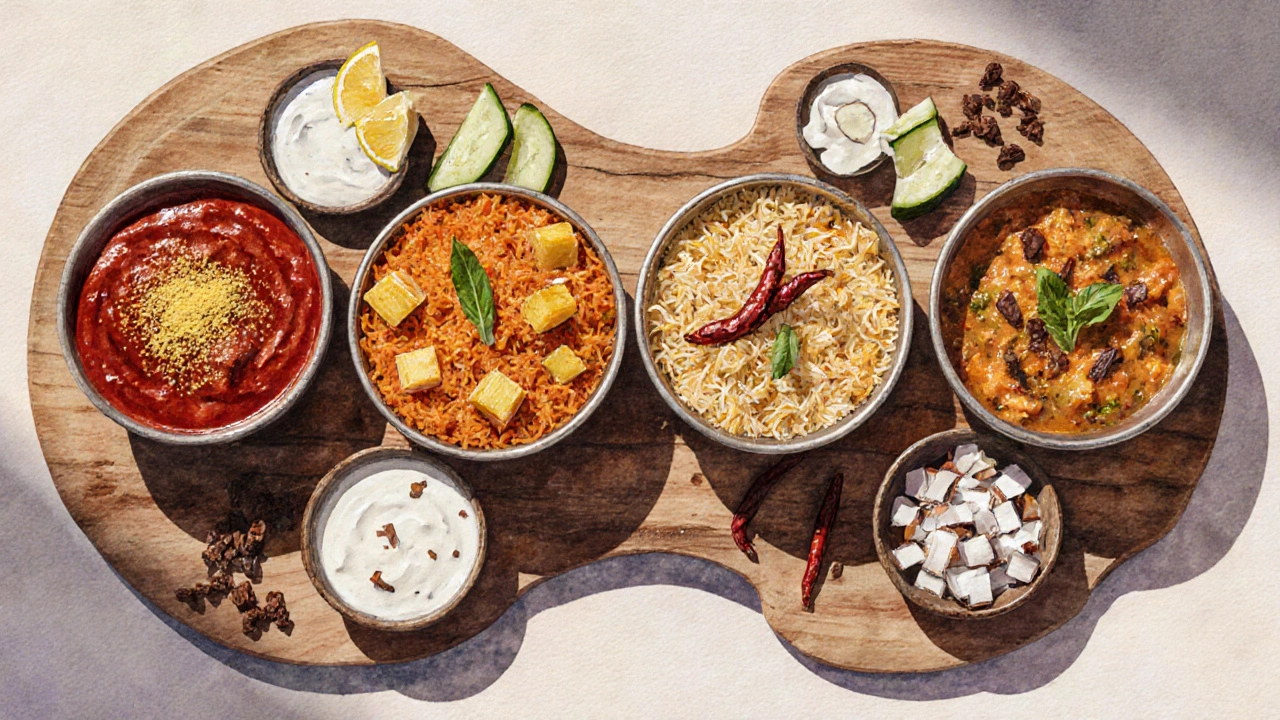
6. Common Mistakes That Make Biryani Too Hot
Even seasoned cooks can overshoot the spice meter. Watch out for these pitfalls:
- Using Hotter Chili Varieties: Substituting Kashmiri chilies with Thai bird’s eye chilies can boost SHU by tenfold.
- Over‑frying Ground Chili: Prolonged frying can caramelize capsaicin, making it taste sweeter but more lingering.
- Skipping the Yogurt Marination: The acid in yogurt helps break down protein fibers, which also reduces the cling of capsaicin to meat.
- Not Balancing with Sweet or Acidic Elements: A pinch of sugar or a squeeze of lime counteracts excessive heat.
7. Mini FAQ - Your Burning Questions Answered
Frequently Asked Questions
Can I make biryani without any chilies?
Yes. Omit red and green chilies, then boost aromatic spices like cinnamon, cloves, and nutmeg. Adding a bit of black pepper or ginger will keep a subtle bite without heat.
Why does biryani sometimes taste hotter after it cools?
Capsaicin binds to fat, and as the dish cools, the fat solidifies, concentrating the heat in each bite. Re‑heating gently can redistribute the fat, mellowing the perception.
Is there a health benefit to the spiciness?
Capsaicin has been linked to boosted metabolism and improved circulation. In moderation, the heat can aid digestion, but extreme levels may irritate the stomach lining.
What’s the role of turmeric in biryani?
Turmeric adds earthy depth and a golden hue but does not contribute heat. It also offers anti‑inflammatory properties.
How can I store leftover biryani without it getting hotter?
Cool the biryani quickly, then refrigerate in an airtight container. Adding a dollop of yogurt before reheating can neutralize excess heat.
Understanding the chemistry, the spice lineup, and the cooking tricks behind biryani’s signature kick lets you enjoy the dish exactly how you like it - whether you crave fireworks or a gentle warm hug.
